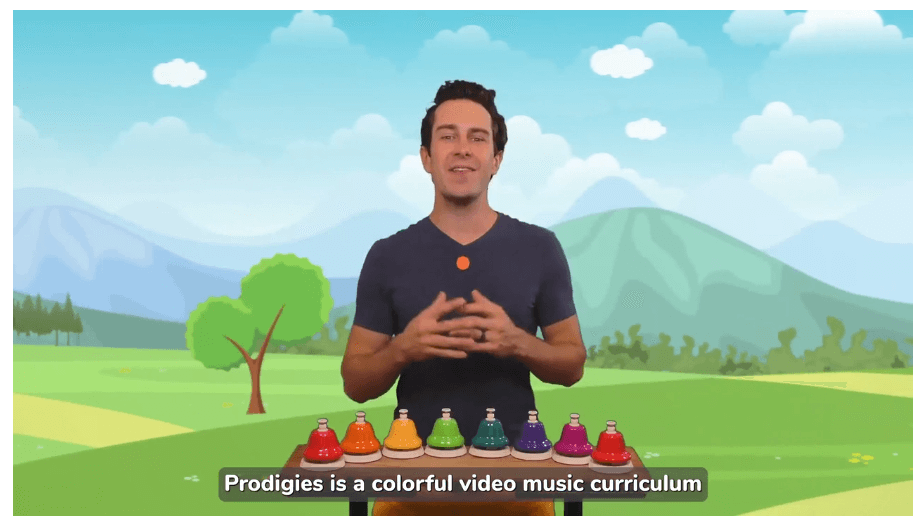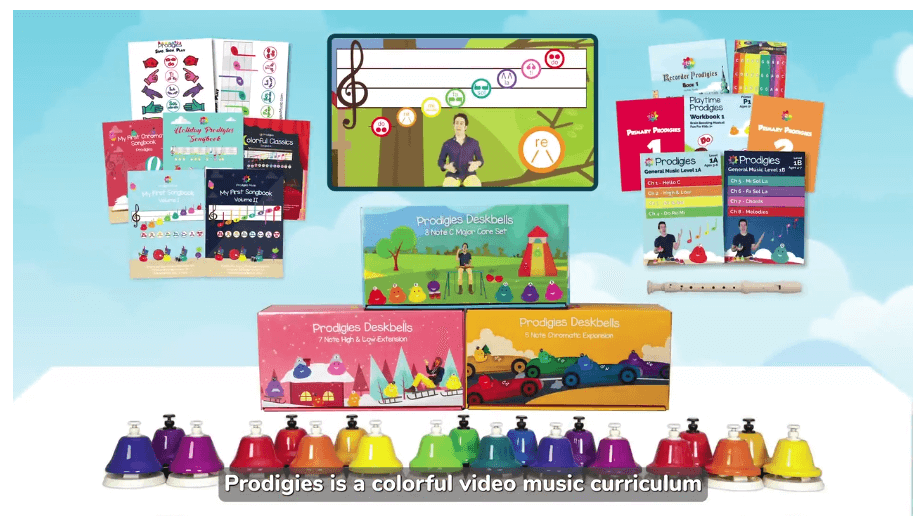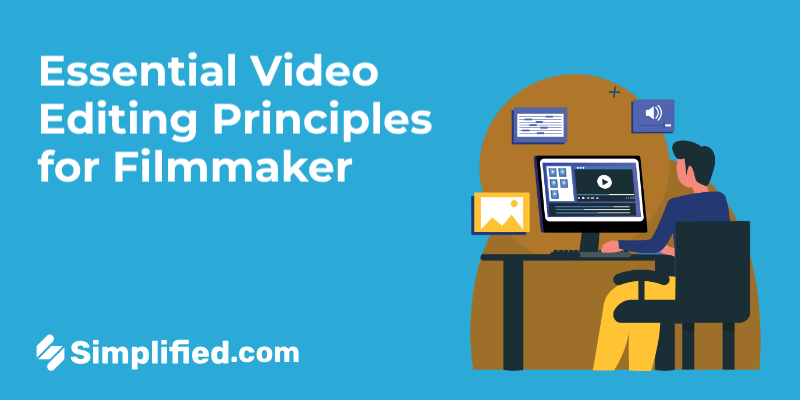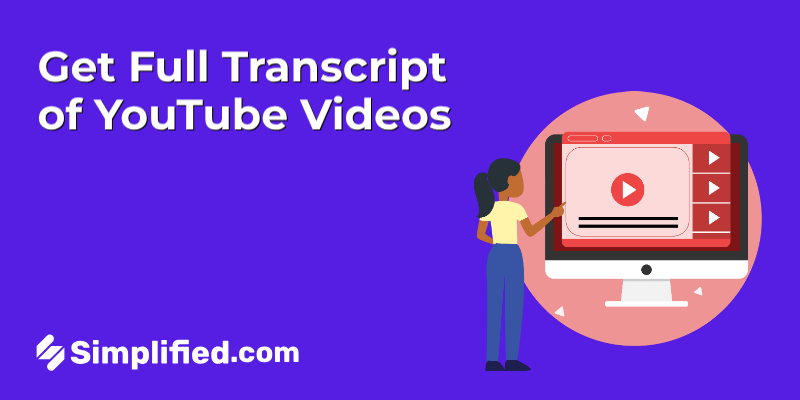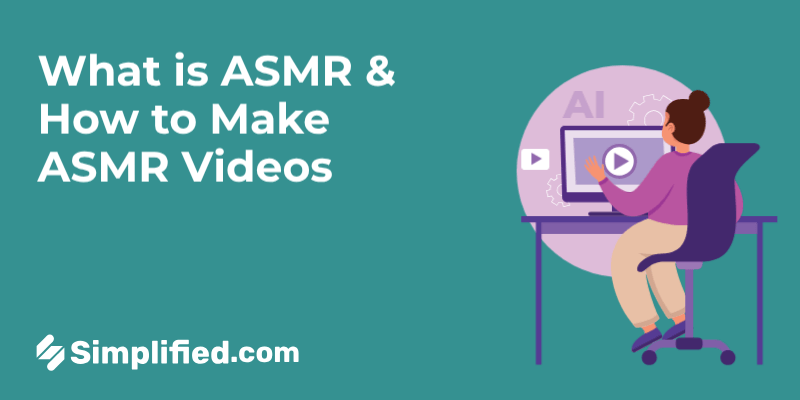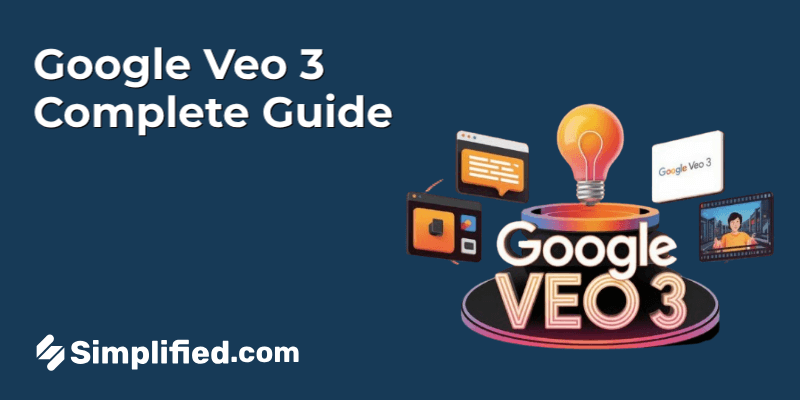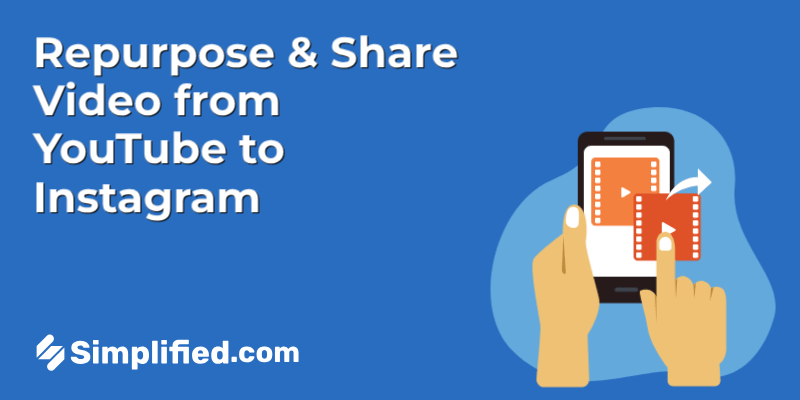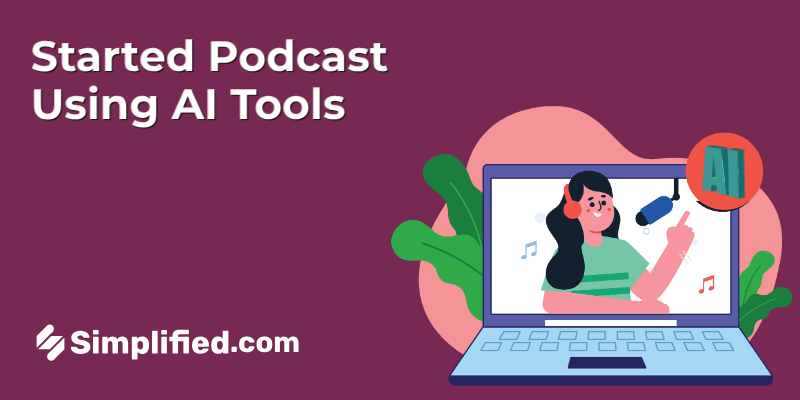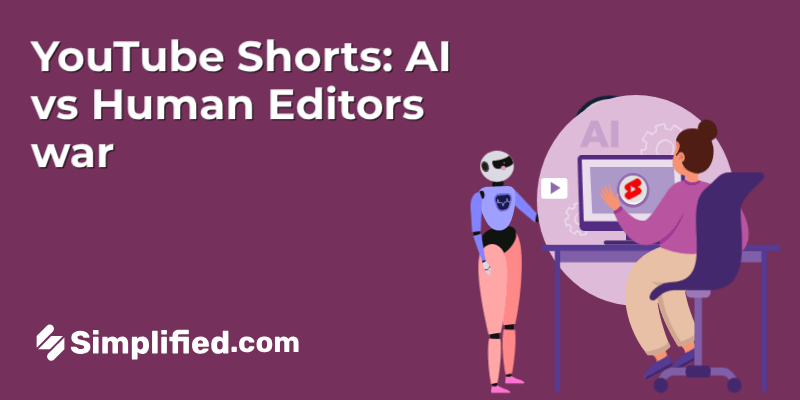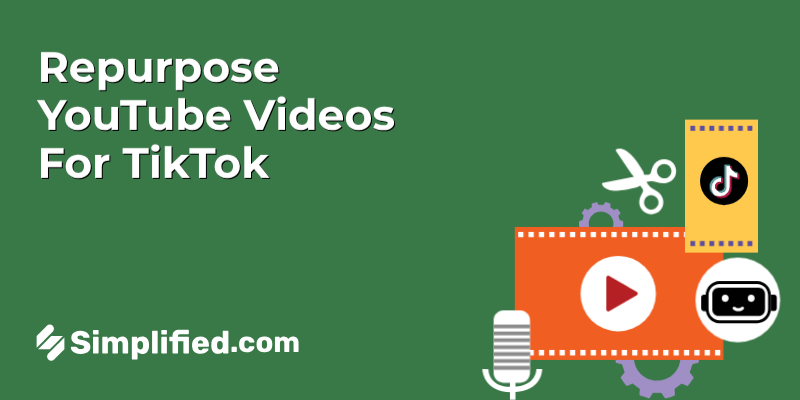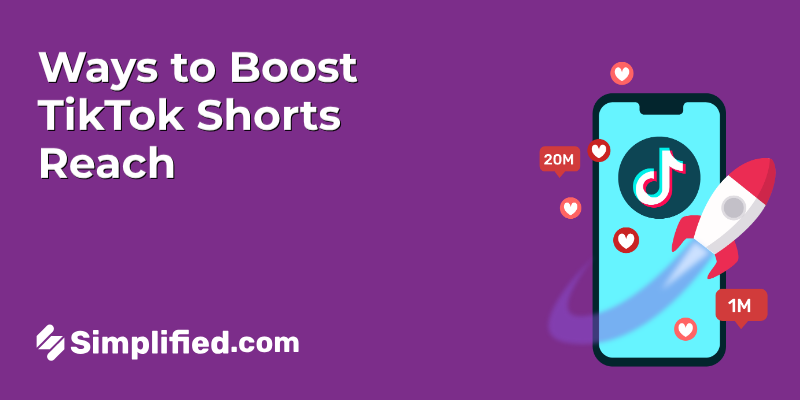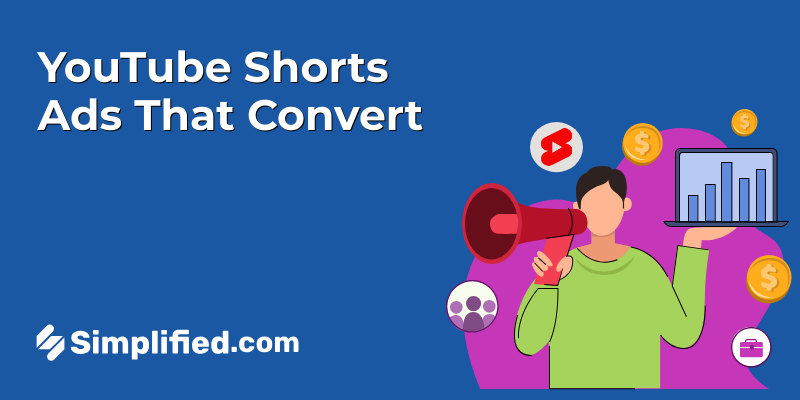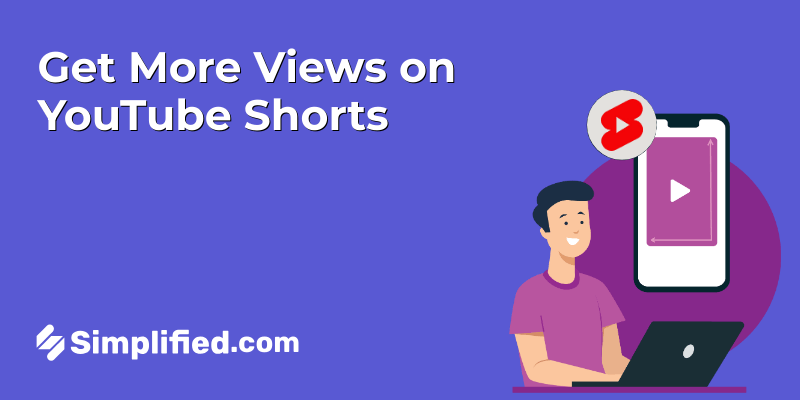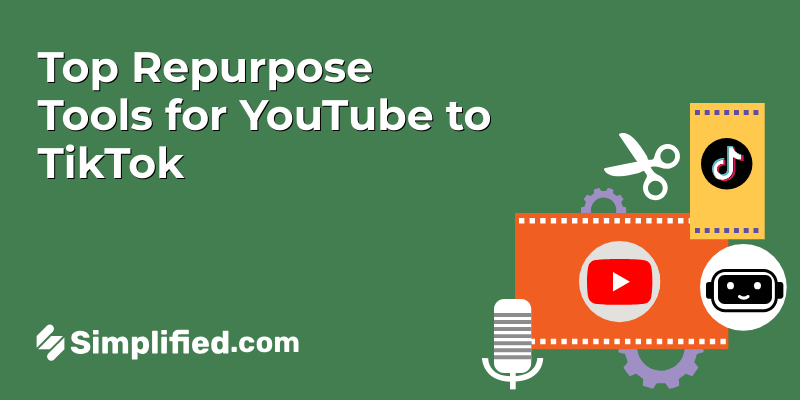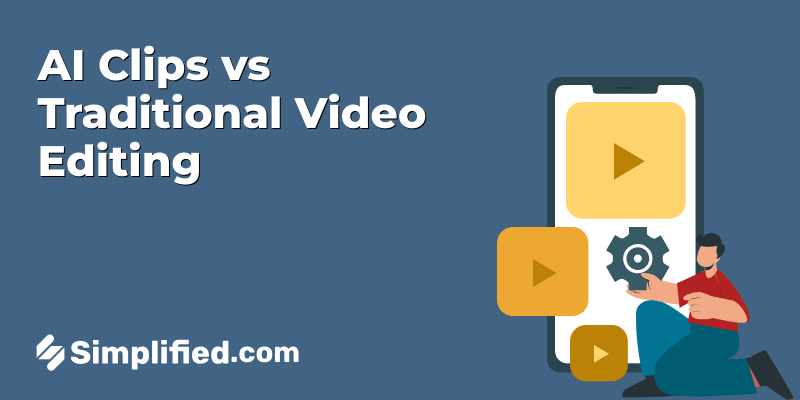
You’ve cracked the code and your membership business is thriving. How’d you do it? You learned how to optimize your videos…
And doing so has led to more traffic to your site. You’re getting more conversions, more members are staying in your community for longer, and your business is growing exponentially!
Is this possible?
Yes.
How do you really do it?
You’ll need clear and actionable advice on how to produce highly optimized videos and content. The kind of videos and content that attract more people and turn them into happy, paying, and long-term members.
What follows is a collection of some of the best tips you’ll find about. You’ll learn how to create videos to attract new members and retain old members too.
It’s a breakdown of powerful concepts that increase video watch-time, improve site dwell-time, and so much more.
But first, why should you go all-in on optimizing videos for your community?
Well, there are a few good reasons.
Greater Searchability
Around six years ago, Google started prioritizing video in search engine results. It meant that a search for almost any topic could return a video with valuable information.

Source: Youtube
And if you sell videos online with memberships, this is a perfect tool for attracting prospects at the top of your funnel. People at the beginning of the customer journey are typically information-starved. They need good quality content and optimized videos are perfect.
Audience & Convenience
Videos are also easily one of the most consumable forms of content available today. Watching and listening is easier for most to do than it is to sit and read long in-depth content.
Mobile phones have lowered barriers too. Anyone with a smartphone can find videos on a topic and watch them on the go. And that’s the kind of convenience that offers you massive upside as well.
Membership businesses with well-produced and optimized videos have a better chance of making the right impression at a time where people are looking for quality content.
Impact, Engagement and Conversion
Because videos are dynamic, they can make a stronger case for a product or service. You have the opportunity to leverage visuals for illustration and emotionally charged music for effect, and these act as a bridge for the mind, connecting ideas more easily.
With well-structured videos that include powerful intros, value-packed ideas, and strong call-to-actions, you can increase engagement, audience satisfaction, improve your CSAT score, and convert more viewers into members. Brands do this all the time with webinars, ads, tutorials, and so can you.
Improved Retention
All membership business owners know that getting new members is just a half of what’s required to build a profitable business. You need to give new and existing members a reason to stay in your community to see your business flourish.
Great videos help retain members. The right onboarding and educational videos focused on issues your audience needs help solving keeps them coming back.
And as more members receive solutions, grow, and become more invested through flourishing relationships with other community members, they stay in your ecosystem for longer. They contribute to your bottom line for longer.
How to Optimize Videos for Your Membership Platform
This is it. A collection of valuable tips on how to transform your videos into optimized videos.
Audience Research Tips
It’s marketing 101, and it’s terribly important. To create your best content, no matter what it is, you’ll need to know who your audience is, what they want, why they want it, and how they want it.
Tip 1: Think of Jobs to Be Done
The best tool you can use to answer these questions is a persona. But don’t stop at figuring out demographics alone. Dig deeper and use “jobs to be done”.
Job Theory was introduced in Competing Against Luck. Customers seek products to perform jobs. There are usually several products available, but customers choose products that best perform the job.
And that concept changes how people typically think about the content they produce. When you’re creating videos to do a specific job for a member of your community, your focus shifts. It becomes all about real value and problem solving.
There are several ways to figure out what jobs are to be done. You could interview your audience, or do online research using tools (more on this below).
Your goal is to figure out:
- What problems your audience is trying to solve
- Why those problems matter to them
- What consequences they might face for not solving their problems
- What solutions they have used or currently use
- Why they opted for those solutions
Answers to these questions can help you find topics for videos that appeal to prospects, attracting them into your marketing funnel, and members.
Tip 2: Lean on Tools
Another way to find answers to our list of jobs to be done questions is with the help of tools. Some of the most helpful include:
Answer The Public
Answer The Public is a repository of all questions that people are searching for related to a specific term. It’s a valuable resource because it breaks down web searches into five categories, including:
- Questions people are asking about your search term
- Search queries that include prepositions alongside your term
- Comparisons that feature your search term
- An alphabetic list of all searches people use related to your term
Having this data offers you specific interests your audience has, interests that are related to jobs they want to complete.
For example, a search for “how to make movies” returns the question “how to make movies from photos”.
If you’re building a community of aspiring filmmakers, a tutorial or video with tips on how to make movies using a collection of photos is exactly what your audience is after.
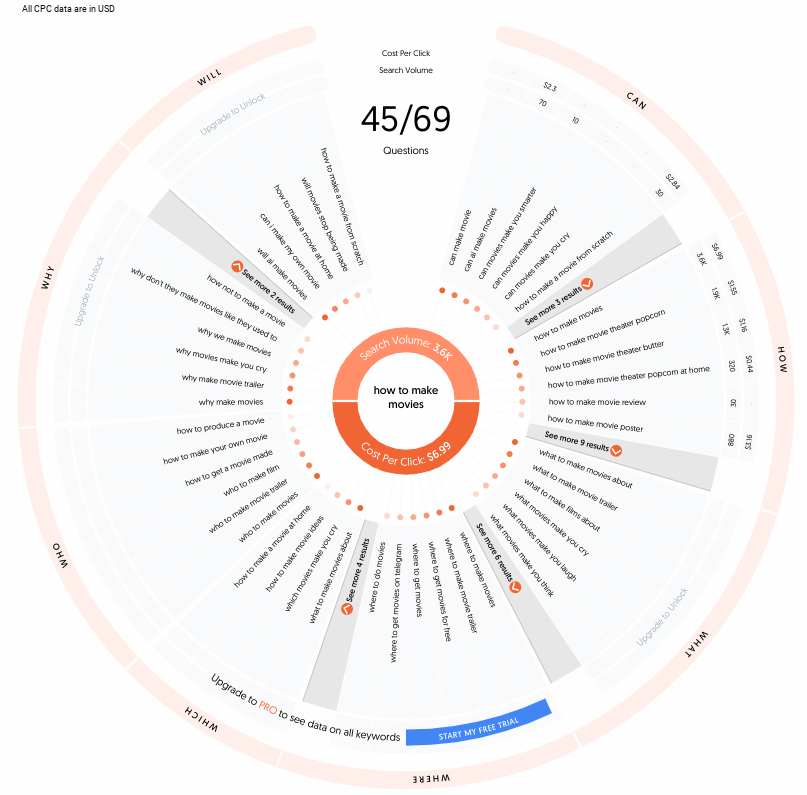
Google Search
Like Answer The Public, Google provides results similar to Answer the Public, and while results are not arranged as neatly as ATP presents them, they are still helpful.
Here’s what a search for “how to make videos from photos” shows:
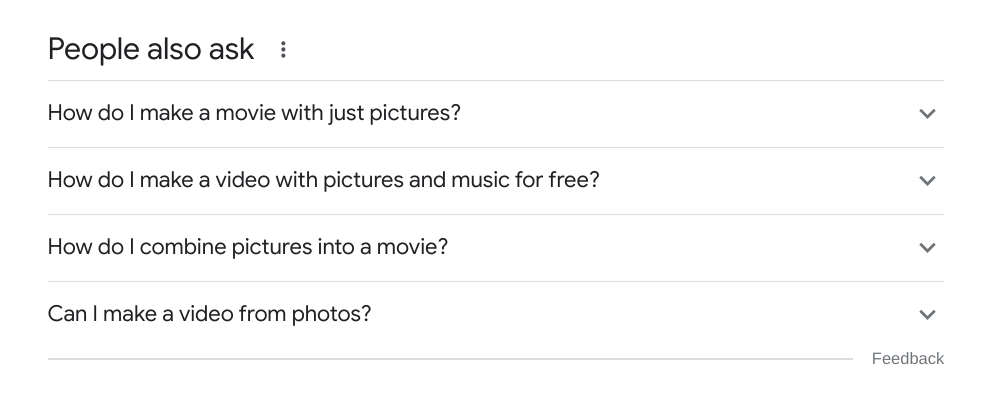
Google’s goal is to present the most useful information to internet users. And to do this, it also produces additional results when you click on any of the questions people also ask. Here’s what I received after clicking on a few results:
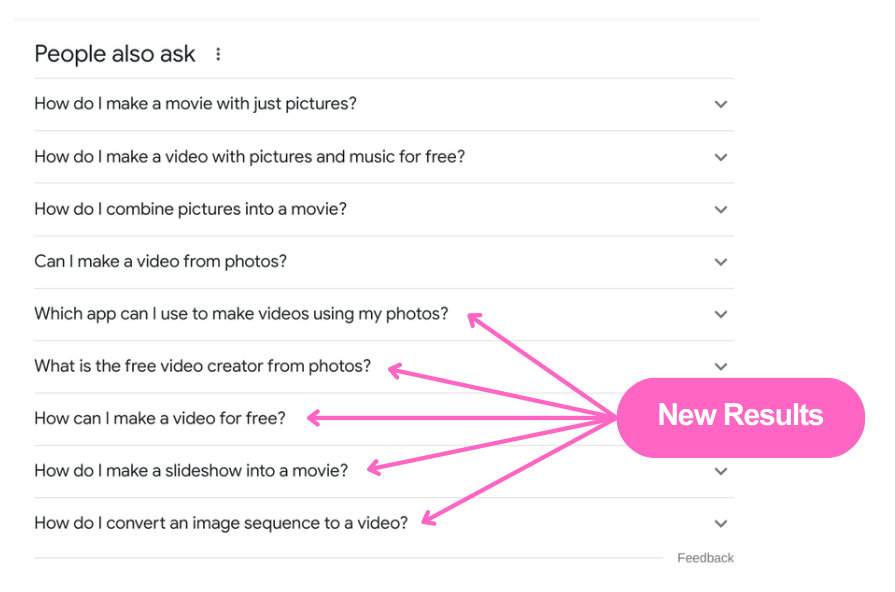
Survey Your Audience
For a closer, more personal approach, surveying your audience helps too. It’s an easy way to pique the minds of people you’re trying to serve.
If you plan to run a survey be sure to segment your questionnaire to identify areas of interest that have been established. Segmentation provides structure and it allows you to zero-in for information you’d like to obtain.
For example, aspiring filmmakers will need to understand various parts of the filmmaking business. This includes, script writing, producing, casting, directing, editing, and more.
These are large topics with smaller subtopics. You could start creating videos for each topic and subtopic, but that is only possible with an unlimited budget and resources.
A smarter approach would be to list all the subtopics for each topic and ask your audience to rate areas they are most interested in. Voting for topics they want to learn more about gives you direction and helps you use your budget and resources more effectively.
Content Planning Tips to Grow Your Community
I hinted at strategy in the last paragraph because it’s critical for generating any sort of marketing success for any business. Being strategic about what you create, and when, directly affects the growth of your business. This is why the marketing funnel is such a powerful tool.
For your business to continue growing, you’ll need to constantly market to new customers and retain existing members. This means striking a balance between video content that attracts new customers and videos that retain members, thus make sure to select the most suitable video hosting platform for your content.
The top, middle and bottom of your funnel will rely on public-facing videos to drive leads and sign-ups. Here’s what that looks like:
Tip 3: Use Top-of-Funnel (ToFu) Videos for the Problem-Unaware
ToFu videos educate problem-unaware people on problems they should be aware of as they embark on their new journey within your domain. A filmmaker’s community producing ToFu videos would focus on topics like, what filmmaking is, or, what being a filmmaker is like.
Tip 4: Use Middle-of-Funnel (MoFu) Videos for the Problem-Aware
At the middle of your funnel, you’ll be producing videos that speak to people who are problem-aware. They know what they want to achieve but need a way to get the job done. This is where you’ll create videos about your community and the education available, the experience of being a member, and support members receive when they join.
Tip 5: Use Bottom-of-Funnel (BoFu) Videos for the Solution-Aware
BoFu videos are designed to convert solution-aware people into members. These videos communicate the value of being a member, share stories about member successes, and provide clear and motivating content that shows the value of being a part of your community.
Plan your videos by identifying the most important videos to focus on. To do this, you can target areas that show clear interest and a tool like Ubersuggest will help. Ubersuggest shows the search volume for a specific term.
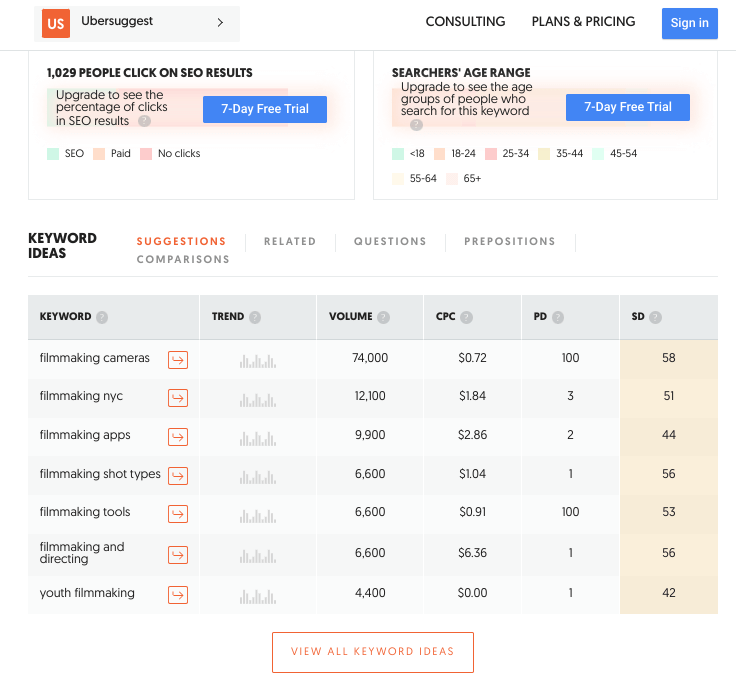
Knowing what people are searching for and how many monthly searches people make for a specific term can help you prioritize content.
Which terms should you consider producing videos for?
Use what you’ll get from Answer The Public and Google search results.
Add these terms into Ubersuggest to get monthly search volumes. Next, arrange your terms by search volume from the most searches to the least.
Lastly, consider which search terms align with the three stages of the marketing funnel and prioritize which ideas you’ll turn into videos.
This simple process will give you direction and help you assign resources to the production of videos that can help move the needle for your business. As a rule of thumb, the top of your funnel should include more content that serves as a hook for problem-unaware people.
As more people become associated with your brand and offer, you’re able to position your membership more effectively. Leads then move from the middle and later to the bottom of your funnel where they are more likely to become paying customers.
Tips for Optimizing Videos
The structure of your videos plays a critical role in how they are received. Here are tips on how to create your most compelling videos yet. Remember, incorporating accessibility features ensures that your content can reach and engage a broader audience.
Tip 6: Hook ‘Em
The first few seconds of your video are likely the most valuable. They give viewers a peek into what your video is about. When poorly executed, bad intros cost you viewers and watch-time. But when you perfect your intros, you’ll find that viewership, watch-time and engagement rise.
For a hook to be effective, it must include three basic elements:
Firstly, it must be concise. Lead with a clear explanation of what’s to come. Don’t spend any more time than necessary sharing what’s to come. Too much information and you’ll sound like you’re waffling on.
Secondly, appeal to your audience’s interest. Looking back at persona research and jobs to be done, you should know what problems or issues your audience needs help with. Lean into these and speak directly to how you will help solve these issues.
Lastly, Explain the pay-off. All problems you introduce must be tied to solutions you can help your audience experience. Share that the purpose of your video is to help them resolve an issue.
Adriene is a yoga instructor, owner and founder of Find What Feels Good, an online online library of yoga, mindfulness and fitness classes combined with a vibrant online community. She uses YouTube as a way to reach new audiences and her videos follow this simple three-part intro model.
Like this one on medication for balancing the nervous system. It’s just over 11 minutes long and in only 17 seconds she introduces the problem and what you’re going to receive by watching the video.
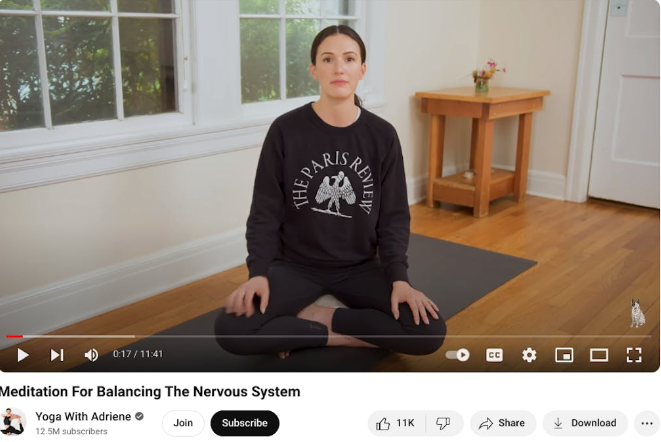
Source: Youtube
TIP: Identify the problem and introduce the solution in the first few seconds of your videos.
Tip 7: Deliver Value
We’ve explored the importance of creating videos that solve problems, and the body of your videos is where you deliver solutions. For your solutions to be as effective as possible, they must tackle the length and breadth of the problem.
In other words, make sure that your solutions work and are practical. This sounds like common sense, however, it’s terribly important to bear in mind.
People taking the time to watch your videos want real solutions. Anything that appears fluffy, unsubstantiated, or just irrelevant will only hurt your brand and make your ideal audience less likely to want to see more of your videos.
Make your solutions effective by:
Addressing the symptoms of a problem and sharing what state of mind or tools your audience needs to achieve the desired result.
Jump Rope Dudes’ is a membership community that offers jump rope workouts and nutrition advice for living a fitter and healthier lifestyle. In this YouTube video, you don’t just get a step-by-step workout, you’re also pointed to advice on the importance of nutrition and diet.
This amount of information and detail shows viewers that there is a clear path to follow.
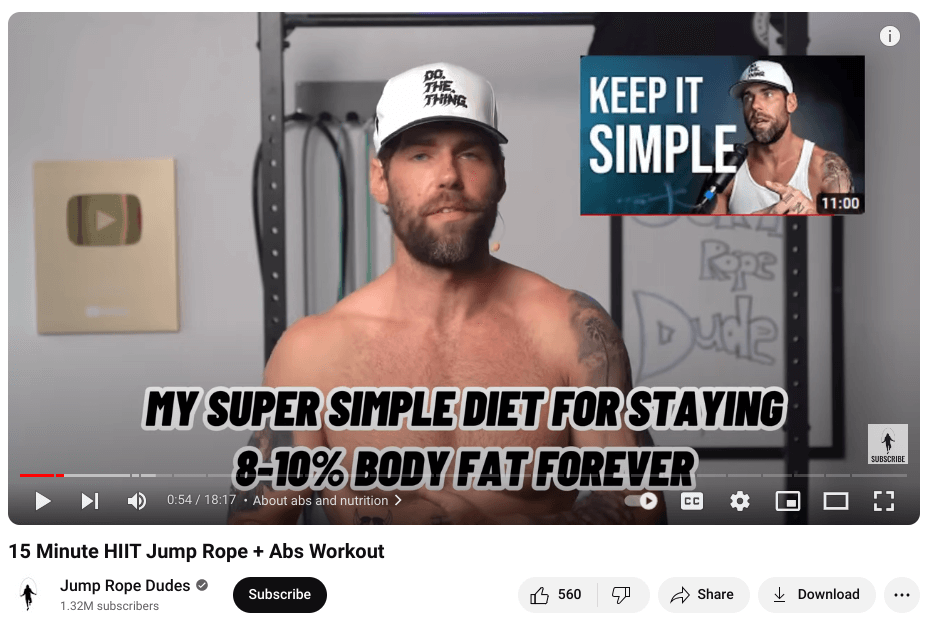
Source: Jump Rope Dudes
TIP: Make a list of the key points to communicate in your video and ensure that they help your audience solve the problem at hand.
Tip 8: Close with a Strong Call to Action
Video is a great tool for growing your business. But it can only be instrumental if you give your audience a reason to take action. Call-to-actions don’t have to be complicated. Your goal is to make an offer by positioning something of value in front of your audience.
Filmmakers Academy’s call to action is a simple text offer at the end of a video. Viewers who have found their short video on lighting for a 360-degree dolly shot have the opportunity to watch the entire course by becoming a member.
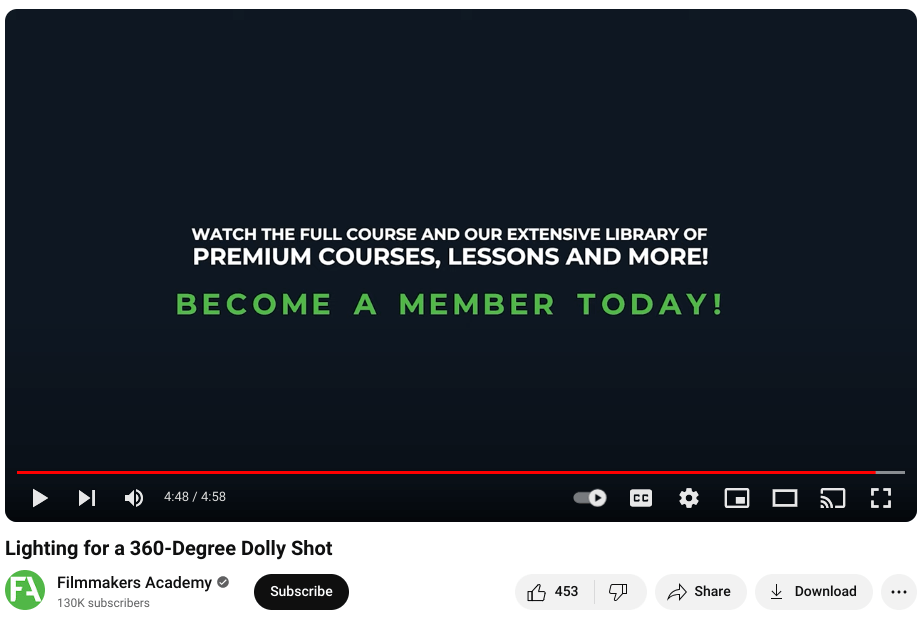
Source: Youtube
This offer is perfectly aligned with content of the video viewers have just seen, and it’s just as valuable because it alludes to a more complete solution to a problem.
TIP: Create a call to action that’s value-packed and aligned with solving your audience’s problem.
Tip 9: Use Pattern Interrupts
Pattern interrupts got their big break in the neuro-linguistic programming or NLP field. As an off-shoot of psychology, NLP was created to help people overcome limiting beliefs by reframing experiences that caused limited beliefs.
When used, pattern interrupts enable NLP practitioners to shift the focus of their clients to specific areas as part of therapy. These shifts help keep clients focused on specific behaviors or objectives that align with a more positive frame of reference.
When applied to videos, it’s less about influencing behavior and more about maintaining attention. Interrupts are small changes that occur during videos that force the viewer to focus and refocus on what’s happening, thereby maintaining their attention.
And pattern interrupts are very effective for producing engaging videos. Because nobody wants to watch anything that’s boring and monotonous.
Pattern interrupts can be in the form of audio cues, where you change the tempo of music altogether. They can also be used by alternating camera angles and shots, like switching from a full shot to an extreme close up.
You can also transition from a close up to a full shot showing the product you offer, just like Prodigies, a kids music streaming education platform.
TIP: Pick at least three ways to transition between ideas throughout your videos and apply them during editing. These can be switching between camera angle and shots, changing background music, using stills, or introducing special effects.
Tip 10: Use Open Loops
Open loops act as a mechanism for creating anticipation. Anticipation is a powerful psychological trigger that makes people want to pay attention to what’s in front of them, if it’s interesting enough.
What’s more, open loops are powerful if you know what problems your audience is trying to solve. Introducing an open loop at the beginning of your video will help increase the likelihood of more people watching more of your videos.
Pat Walls is the creator of Starter Story, an online platform filled with videos from successful entrepreneurs who share complete frameworks they’ve developed and used to create lucrative businesses.
His videos often include open loops introduced at the beginning of each new story. His formula includes sharing success, and challenge, and then mentioning that there’s a unique element that helped the protagonist finally succeed. That unique element is what he shares later in the video.
In his story, the unique element is a book. Notice how it’s blurred out (reinforcing the open loop).
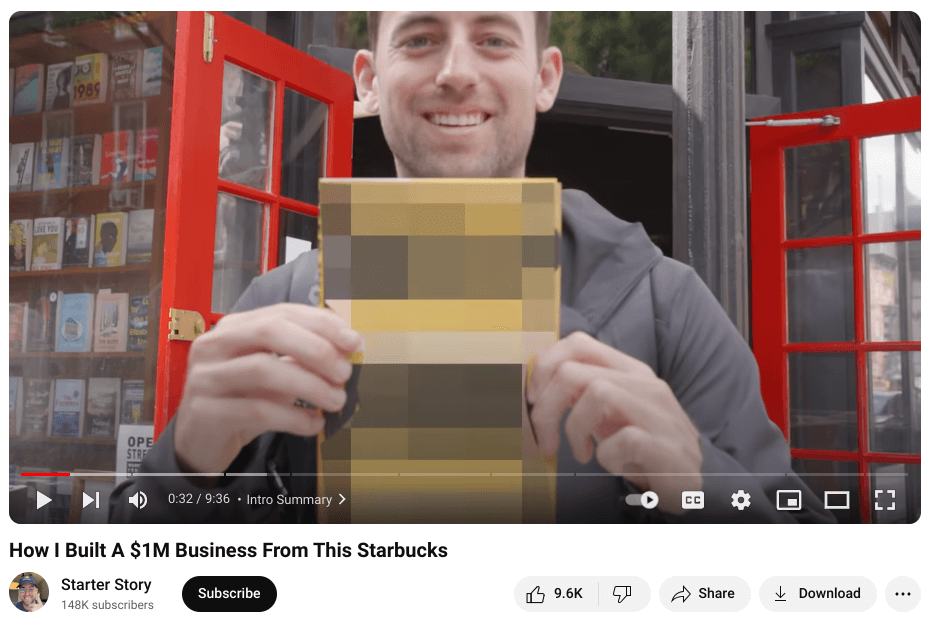
Source: Youtube
TIP: Introduce a unique element that contributed to the solution at the beginning of your video but don’t reveal it until later in your video.
Tip 11: Always Tell Stories
Stories are effective because the human mind is wired to pay attention to them. And if you’ve ever enjoyed any form of video, it’s because it explored a compelling enough story, even if it was a music video of your favorite band in concert.
The arrangement of the music, the atmosphere, and the artists involved came together to produce an experience that you found compelling.
Creating optimized videos for your community isn’t any different. Your goal is to create stories around problems, stories that are easy to understand and have a pay-off.
The hook, value, and call-to-action formula helps you do just that. But, you’ll have to ensure that your story is cohesive. The simplest way to achieve an easy-to-follow storyline is by staying as close to solving the problem as possible.
TIP: If you find that there are too many ideas related to the problem, note them down and focus on the biggest one. Typically, all of the other problems are significant enough to either stand alone as individual videos or be grouped in twos.
Tip 12: Inject Emotion
The first rule copywriters learn is that people buy based on emotions and justify purchases with logical arguments. Think about that for a second…
Can you recall the last time you chose a specific hoodie or t-shirt? Whether you’re aware, the article of clothing appealed to a specific part of you that resonated with a sense of identity. You felt that wearing that hoodie or t-shirt would make you feel more like yourself.
Your purchase was based on an emotion, specifically, a sense of personal pride.
When you’re able to identify emotions your audience experiences when dealing with a job to be done, and communicate those emotions, you’re able to make your videos more compelling.
Pat Walls illustrates how impactful emotions are in the following shot. Here’s how he makes viewers emotionally invest in his video with the use of three elements:
- The subject is has their hand on their head (frustration)
- The subject is in a poorly lit room (possible strife and suffering)
- Text above the subject’s head communicates that there is a problem (discomfort) and it’s something above him (burden)
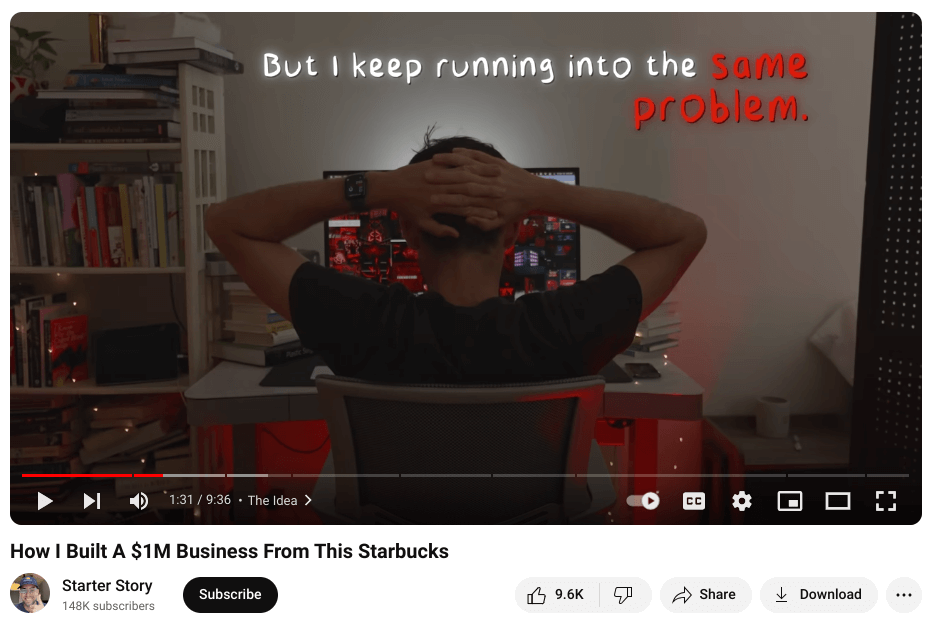
Source: Youtube
TIP: You can use Patt’s method too, or an even simpler approach. Try injecting emotions into parts of your video when you establish the problem. But don’t stop at just mentioning it.
Go a step further and highlight a consequence tied to an emotion that viewers will experience if they don’t solve the problem. Also, identify and call out the positive emotion viewers will experience after having solved the problem because they saw your video.
Site Optimization Tips
As most of your membership videos will be gated, what follows is a collection of tips for optimizing web pages on your site where you’ve shared free videos publicly. Optimizing your site pages which include embedded videos makes it easier for search engines to find and rank your content.
Here’s how you can improve your site rankings:
Tip 13: Use Target Keywords
While there are several SEO ranking factors, keywords are likely one of the most significant factors you cannot ignore. Search engines use web crawlers to identify the content that related to specific keywords internet users type into search bars.
And if your site pages include keywords your audience is searching for, you’re one step closer to ranking higher. Ubersuggest and Google work perfectly for finding keywords and you can start with both tools for free.
Tip 14: Optimize Page URLs
URLs are an indicator of how relevant your page content is to an internet user. Add your keyword to the URL of the page where your video is embedded. It’s a signal to search engines that you have the right answers to a problem users are trying to solve.
Tip 15: Optimize Video Descriptions
The practice of on-page SEO involves positioning copy in an optimized way that shows search engines you have information that users are looking for. And as videos go, descriptions are clear accounts of the problem your video was created to solve.
As you create descriptions, include keywords once for every 100 words. This makes your descriptions appear spammy to search engines and more natural and, therefore, valuable.
Get Your Feet Wet
You’ve just absorbed a wealth of information and it’s only natural that you may feel slightly overwhelmed. But don’t let that sense of overwhelm stop you from taking action. These tips can be applied one at a time, and I’d recommend that you take your time doing so. In no time, you’ll begin to see results that your effort is paying off.
